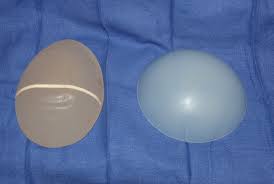Enhancement of the buttocks has become a very popular cosmetic procedures whose numbers are far greater today than they were just ten years ago. Much of this increase has been seen with the use of fat injections, known as a Brazilian Butt Lift. Offering a natural method of buttock augmentation and getting the dual benefit of liposuction reduction of the harvest areas, fat injections are in high demand particularly amongst African-American and Hispanic patients.
But not everyone who wants buttock augmentation has enough fat tissue to harvest and must consider the use of synthetic implants as an alternative treatment option. There are also some Brazilian Butt Lift patients that have had unsatisfactory amounts of buttock enlargement due to loss of the injected fat or marginal donor tissue when the procedure was performed.

In the April issue of the journal Plastic and Reconstructive Surgery, an article appeared entitled ‘ Buttock Augmentation with Silicone Implants: A Multicenter Survery Review of 2,226 Patients’. Based on a survery results obtained from 19 plastic surgeons that regularly perform buttock implants, their surgical technique and complications rates were obtained. Over two-thirds of the plastic surgeons favored an intramuscular location for implant placement and were evenly split over a single or dual gluteal cleft incision. Surgical time averaged under 3 hours and most plastic surgeons used drains for several days after surgery. The total number of complications were reported were near 40% with the most common one being incisional separation. Seromas and infections occurred in less than 4% of patients for each type of fluid accumulation. Implant removal was done in less than 4% of the patients due to infection, seroma or chronic pain.

While the recovery and potential complications with buttock implants is higher than that of fat injections, it can be perfromed safely and effectively using a variety of management strategies. These include not using too large of an implant, good incisional closure techniques, the use of IV and irrigating antibiotics, draining the implant site for days after surgery and keeping physical activity restricted in the immediate after surgery period.
Dr. Barry Eppley
Indianapolis, Indiana


